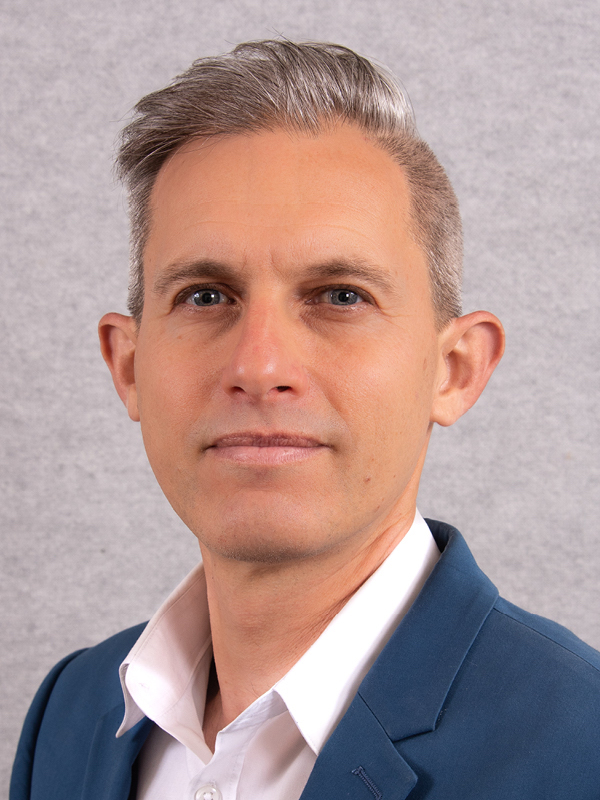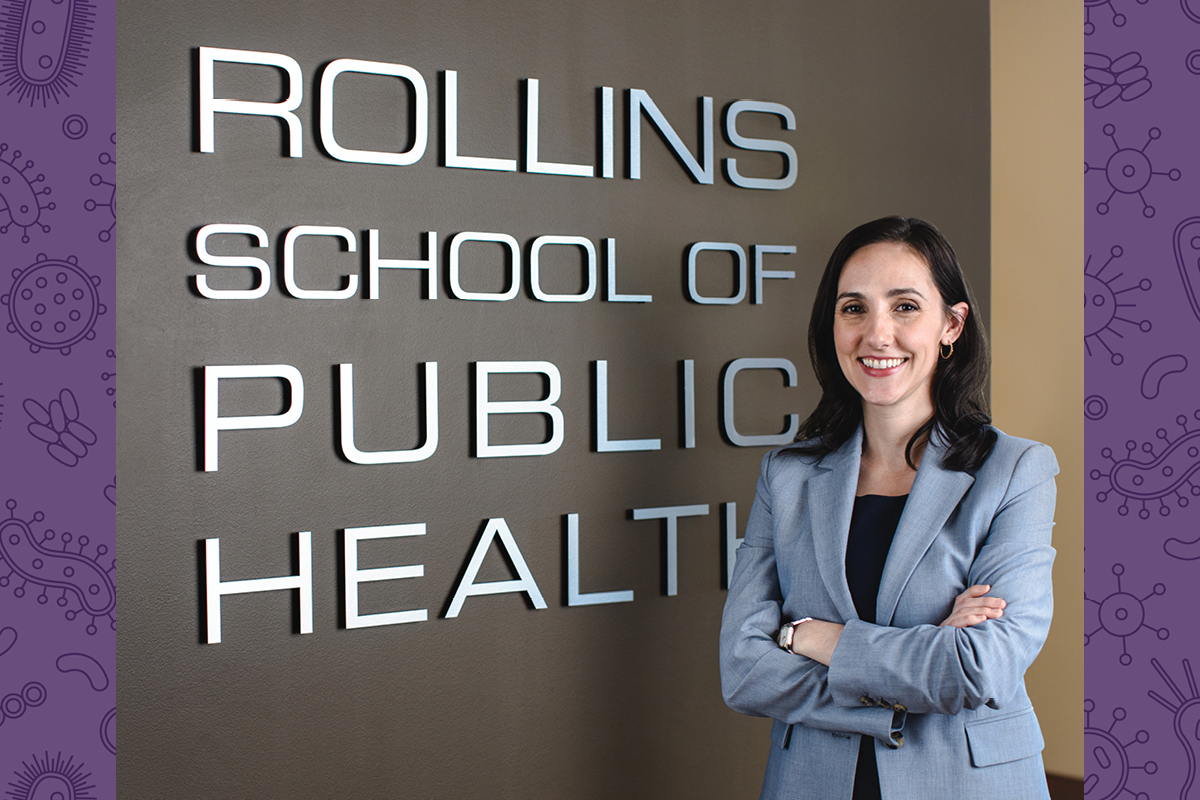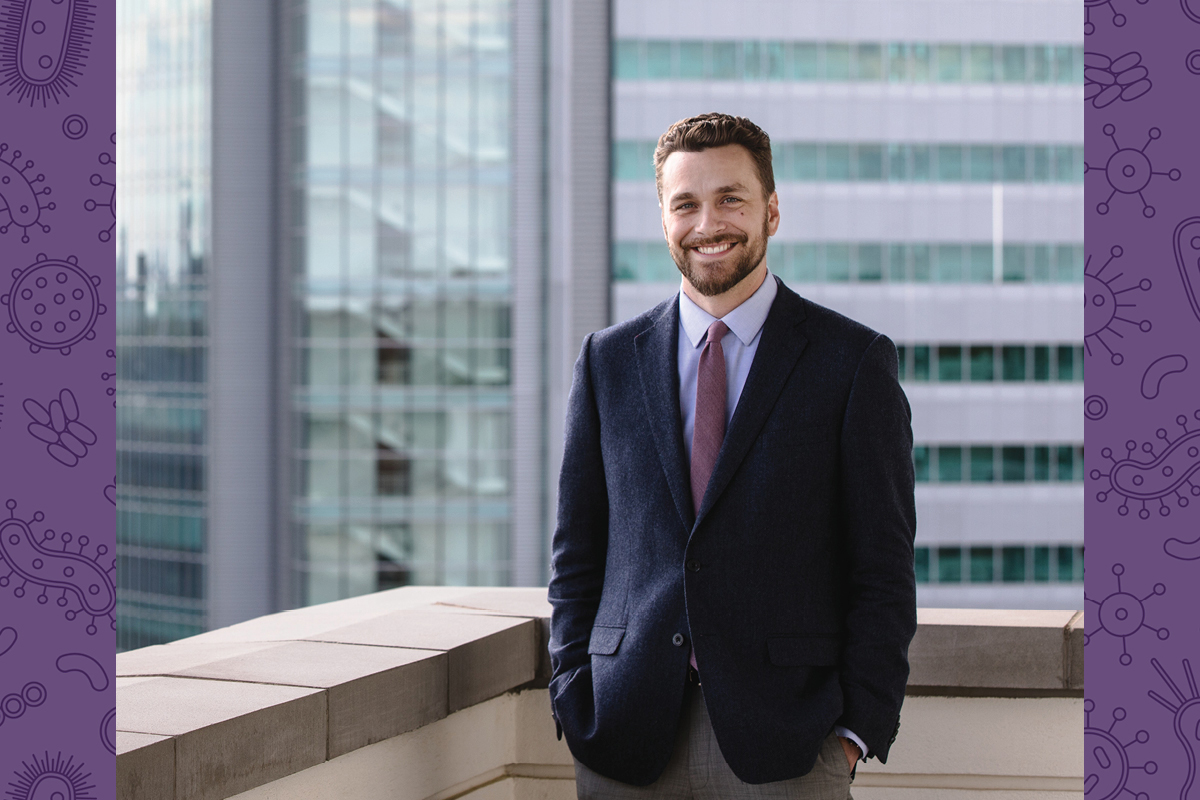What Happens After the Vaccine Leaves the Lab?

While some may have thought the book was closing on COVID-19 when the first vaccines were released in early 2021, a group of researchers at Rollins knew several important questions about vaccination remained. That same year, they created the Emory Alliance for Vaccine Epidemiology (EAVE), based on the idea that developing a vaccine is only the first stage in its long life cycle.

Ben Lopman
“We're bringing together all of the expertise around understanding the impacts of vaccines in the real world,” says EAVE co-director Benjamin Lopman, PhD, professor of epidemiology. For Lopman and co-director Natalie Dean, PhD, assistant professor of biostatistics and bioinformatics, the “real world” means looking at everything that affects how vaccines are used and how effective they are when first deployed on a widespread scale.
Facets include studying the dynamics of how a disease moves through a population and how to devise the best policies for dealing with it, along with vaccine hesitancy, the complex collection of motives and attitudes that lead people to delay or decline vaccination for themselves or their families. It also involves tracking vaccine uptake, the proportion of the population that receives their vaccination—not just for COVID but for a range of vaccines. Addressing these aspects requires asking questions beyond those raised in the traditional biomedical lab as well as bringing together a multifaceted team looking at vaccination issues from varying perspectives.
“There is both a biomedical mindset as well as a social and behavioral science mindset,” Lopman adds.

Natalie Dean
A New Institution for a New Age of Vaccines
Dean and Lopman believe the world is entering a new golden age of vaccine development due to incredible advances in biotechnology such as the use of messenger RNA to develop new vaccines with unprecedented speed. Such advances will help bring more vaccines to market more quickly, multiplying the number of questions that will need to be addressed once the vaccines gain regulatory approval and begin to be used. Another example is the growth of home testing for COVID-19, which raises a new series of questions about how to evaluate vaccine efficacy.
“If you think about who is doing home testing,” Dean says, “it shifts the profile of cases over time. A lot of the milder cases now will just go unreported, and you have over-representation of severe cases. So, even with no change in how well the vaccine is working, you can see changes in what the vaccine appears to be doing because of changes in the reporting systems.”
EAVE has four interrelated missions: conducting impactful research, building a community of investigators in multiple disciplines, training the next generation of research leaders, and disseminating findings to policy-makers and the general public. To support these missions, the group brings together Emory researchers in epidemiology, biostatistics, computer science, biology, global health, and other disciplines to tackle vaccine effectiveness on multiple fronts.
In addition to Lopman and Dean, Rollins faculty and staff associated with the center include:
- Robert Bednarczyk, PhD, associate professor of global health
- David Benkeser, PhD, assistant professor of biostatistics and bioinformatics
- Allison Chamberlain, PhD, research associate professor of epidemiology
- Brian Graaf, MPA, project director of Lopman Research Lab
- Jodie Guest, PhD, MPH, professor and vice chair of the Department of Epidemiology
- Michael Haber, PhD, professor of biostatistics and bioinformatics
- Samuel Jenness, PhD, associate professor of epidemiology
- Max Lau, PhD, assistant professor of biostatistics and bioinformatics
- Elizabeth Rogawski McQuade, PhD, assistant professor of epidemiology
- Kristin Nelson, PhD, assistant professor of epidemiology
- Lavanya Vasudevan, PhD, MPH, CPH, associate professor of global health
- Cynthia Whitney, MD, MPH, professor of global health
- April Zion, MPH, project manager of EAVE
Researchers are encouraged to try new ways to evaluate vaccine performance or do research that pushes existing knowledge in new directions.

David Benkeser
Understanding Behavior’s Role in Disease Transmission
Lopman is part of an international team studying the multiple ways disease is spread by human physical contact. The team is exploring answers to questions such as: How do contact patterns change with social distancing? What’s the average number of contacts people have with social distancing compared to without? Do different groups of people have more or fewer contacts at different times?
“We’re studying the kind of human behavior that underlies infectious disease transmission,” Lopman says. “Two people coming into contact with each other is necessary for a pathogen to spread, so human behavior is critical. And surprisingly, we have very limited, very poor data on such behaviors.”
The social mixing research is under way on multiple fronts. One project, known as GlobalMix, is the first standardized, multisite study of how rates and patterns of social mixing differ across and within cultures. Researchers are gathering data in rural and urban areas of Guatemala, Pakistan, India, and Mozambique. In another project, employees in a large American corporations keep diaries and wear proximity sensors to learn how infectious diseases spread in business settings and whether teleworking changes that pattern. A third project looks at how disease spreads through social contact in nursing homes.
“This work is important for characterizing models that look at populations,” says Dean. “They're looking at how folks mix across age groups. The challenge has been having limited data from different settings. People have been relying on results from one study for a long time. Ben and his group’s work is very important because they’re capturing data from different settings and different countries in different contexts.”
Early research conducted after the start of the pandemic found widely diverse patterns of social contacts. A survey of U.S. adults found, for example, that people had different numbers of contacts depending on whether they took place at school or in the workplace. Men had more contacts on average than women, while those identifying as Asian had fewer contacts than other demographic groups. Variations in behavior sometimes led to significant differences in disease exposure between various activities and groups. Lower income and minority groups were more likely to fall into the category of “essential workers,” which may have required them to return to work sooner.
Gathering information grows more difficult when researchers try to collect social contact data across diverse countries and cultures. “There are a lot of nuances in asking people about their interactions and understanding people's perception of what a contact is,” says Lopman. “And in societies where not everyone is literate, it’s challenging to know how to record this kind of data. Anthropologists are helping us do the studies in the most rigorous way and to collect data in a culturally appropriate manner. We’re capturing some of that diversity between urban and rural sites and from continent to continent.”

Jodie Guest
Keeping Different People Informed in Different Ways
Because human behavior is so diverse, people need different kinds of information about vaccines and need to acquire it in myriad ways. For Guest, searching for better ways to communicate the need for testing and vaccination has sometimes required her to reverse the conventional relationship in which experts impart knowledge and others are expected to listen.
“We all have different lived experiences,” Guest says. “There are reasons for many people to mistrust the medical community. And if we don't acknowledge that in advance, we’re ignoring an incredibly important part of who someone is and how information is heard.”
This hard-won insight led Guest to meet with and study multiple and diverse groups throughout the COVID-19 pandemic to try to understand what kinds of vaccine information each required.
“We started in the poultry plant community in north Georgia in the Spring of 2020, where English as a primary language is one of the barriers to science communication,” she says. “In these communities, people have a lot of concerns about the collection of information that could put their livelihood and their ability to reside in north Georgia at risk. People did not want to test because, if they test positive, they will not be able to work and will lose their income.”
Guest believes the information environment throughout the pandemic—particularly social media—created a level of misinformation never experienced before. With everyone learning about the virus in real time, missteps occurred, particularly the tendency to say the same thing to everyone.
This “one-size-fits-all” approach did not work, Guest explains. “We started using the phrase, ‘What is someone's why?’ For instance, why are you not interested in this vaccine? What are the barriers for you? As opposed to, here's a requirement, go out and get vaccinated, period. That’s not a personal approach, and we needed to change that.”
Her conviction that these conversations made a difference led her to get involved with the sometimes messy reality of community engagement and deep listening. After spending time with poultry workers, her team partnered with Atlanta’s Mexican Consulate to find new ways to meet workers’ information and access needs. The team also did a multimonth survey of people experiencing homelessness in Atlanta’s Woodruff Park. Studying this specific population required using different methods.
“People didn't want a vaccine for different reasons than those we had seen when we had been working with in north Georgia’s poultry plants,” says Guest. “They were very concerned about potential side effects, how they would deal with those side effects. Specifically, there were concerns about who would watch their possessions.” In order to capture information like this, Guest and her team moved away from a structured set of questionnaires. “What we found worked best was having open-ended conversations and keeping track of the different themes that emerged.”
The pandemic and new biomedical technologies have created a changed environment for vaccines in the world beyond the lab. EAVE researchers believe that’s where some of the most important science is beginning to emerge.
“We need to think about the best way to use a vaccine, the best way to tackle these infectious diseases,” Lopman says. “That's where EAVE will really make a contribution.”


